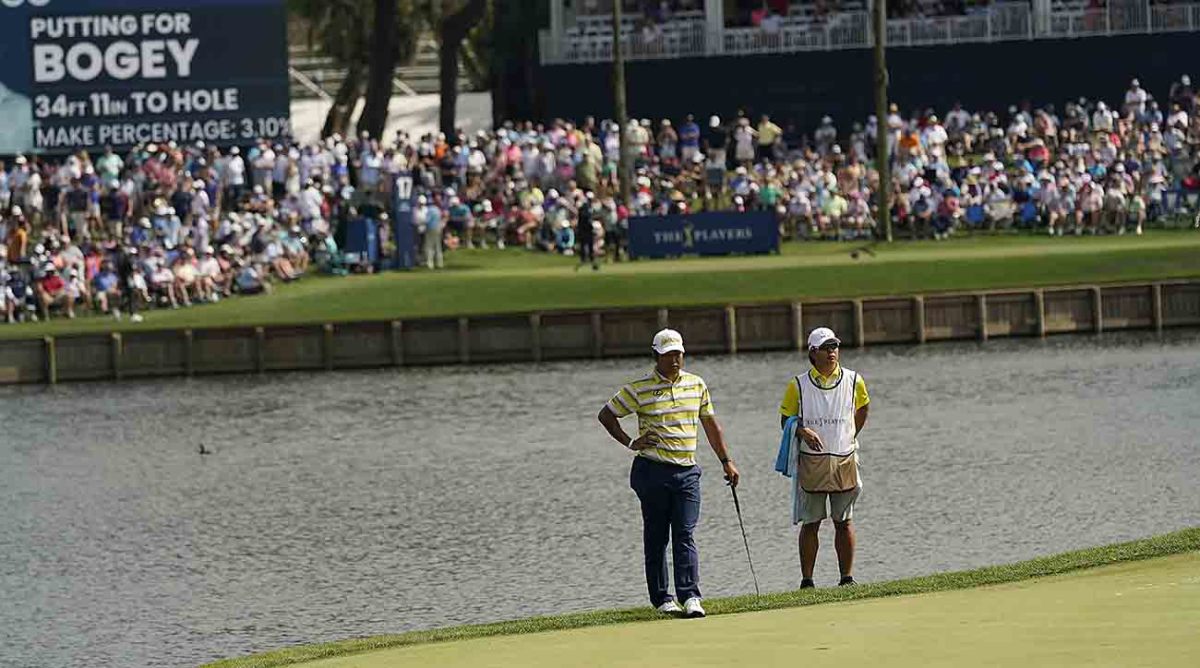Slow Play is a Scourge That Isn't Going Away, and the PGA Tour Doesn't Seem to Care

On Mondays, Alex Miceli will check in with what he learned over the last week.
After watching Major League Baseball reduce its game times in spring training from just over three hours in 2022 to nearly two and a half hours through the first half of 2023, it made me wonder—could the PGA Tour could do the same thing?
Or do they really have the same desire to put a better product on the field as baseball is doing with the current changes?
The modifications in baseball have been dramatic, with a pitch clock, limits on extreme shifts and larger bases all serving as changes toward the ultimate end of improving pace of play.
Of course, after watching what occurred at the Players last week, I learned one important lesson: pace of play in professional golf is a pipe dream.

Player after player came off the TPC Sawgrass Stadium Course peeved that they were either warned about slow play or put on the clock after a warning because they were out of position.
But not one penalty stroke was added to the score of one player.
The last time a stroke penalty was assessed was when 30-year-old John Catlin was dinged a stroke in the first round of the 2021 PGA Championship at the Ocean Course on Kiawah Island.
And before that, 14-year-old Tianlang Guan received a stroke penalty for pace of play at the 2013 Masters.
So, two times in 10 years a penalty was assessed for slow play and not on a leader or when it really mattered.
That statistic speaks volumes.
Another fascinating stat is that since the World Wide Technology Championship at Mayakoba at the beginning of November, not one PGA Tour event played on a single course has made a cut on Friday.
That means the Houston Open, Sony Open, WM Phoenix Open, Genesis Invitational, Honda Classic, Arnold Palmer Invitational and the Players Championship all completed their second rounds after Friday.
Slow play is endemic in professional golf and its reasons vary, but the main culprit is both setup and field size, both which can be addressed very easily.
Over time, the PGA Tour has allowed many events to make their courses far too penal with setups that in some cases rival those of majors.
The setup at the Arnold Palmer Invitational earlier this month resembled a torture chamber, with fairways the widths of bowling alleys and greens as hard as brick patios.
That difficulty directly slows down play and results in frustration by players and fans.
The best example of a difficult setup was at the Players Championship where the course had wider fairways than Arnold Palmer, but chip-out rough and nearly more water than the land of 10,000 lakes. Then add in hard, fast and windy conditions and the result is five-and-a-half-hour rounds.
Doc Redman, who was put on the clock during Friday’s second round, asked the rules officials about how many of the groups in the first round met the time-par set for the course.
The answer? None. So, not only does this prove how slow the rounds were at the Players, but also why are the rules officials using a time-par that clearly doesn’t reflect reality?
When asked about the slow play at the Players, chief rules official Gary Young considered the golf course as the main culprit.
“This golf course is just one that there are so many situations that happen out there,” Young said. “We have seen some big numbers, and there seems to just be holes that can come up and bite a player at any time and result in a high score.”
Young said the pace of play was anywhere north of four hours, 55 minutes for the first groups and that was what was expected.
“It got as high as five and a half hours,” Young said. “But that is just the result of the challenge of this golf course that it provides, design-wise, and also the size of the field that we're playing. It is a challenge, but we feel very confident that we're playing at the pace that we anticipated.”
Can you say boring? Because when you get to over five hours, I think the Tour needs to find a pharmaceutical sponsor that would provide uppers for the fans, so they don’t fall asleep watching that product.
Young touched on the other issue, the size of the field.
It’s been well known that 156 players are too many, but the PGA Tour as a membership organization is required to create as many playing opportunities as possible for its players.
“That's always been a priority, and we just understand that we will, unfortunately, have to finish sometimes on Saturday morning,” Young said. “That's just the way it is. The numbers are the numbers. It's a mathematical equation. You can figure it out.”
Yes, it is easy to figure out, there are too many players in most fields and that causes slower play.
This issue may be moot going forward in a world of designated events, with smaller fields of between 70 to 80 players.
Do the numbers. If those eight designated events had 1,056 spots (average of 132 per event), they would be reduced to just 640 spots.
This designated movement that started this year seems to have changed the Tour’s focus on creating playing opportunities and may help the slow play issue.
With the reduced fields, the focus will come back on the player and how fast or slow they play.
Again, using basic math, imagine if a player is just 10 seconds faster in a threesome over every shot on average. Assume each player shoots 70, the time saved would be 35 minutes for that group.
But players are inherently slow. When playing for literally millions of dollars, it’s understandable, but 10 seconds?
So since the Tour seems unwilling to enforce a slow-play stroke penalty and unless we get a shot clock where each player is timed and dinged for slow play, then we get back to what I learned last week:
No one really cares about slow play.
